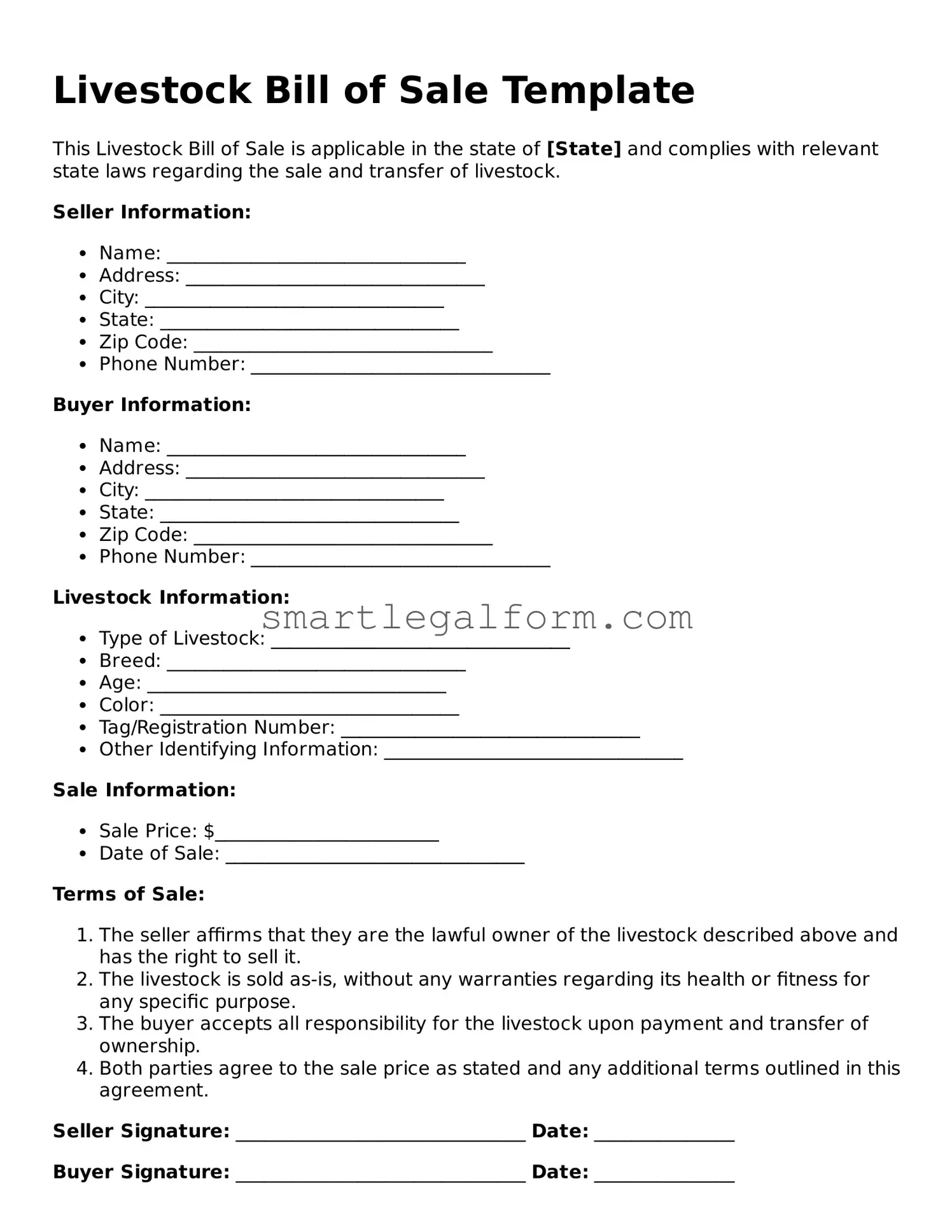When filling out a Livestock Bill of Sale form, accuracy is crucial. One common mistake is failing to provide complete information about the livestock being sold. Buyers and sellers should include details such as the breed, age, and identification numbers. Omitting this information can lead to disputes later on, as it may create confusion about what was actually sold.
Another frequent error is neglecting to include the purchase price. It might seem straightforward, but leaving this section blank can cause complications. Both parties need to agree on a price, and documenting it protects everyone involved. Without a clear purchase price, misunderstandings can arise, potentially leading to legal challenges.
People often overlook the importance of signatures. A common mistake is not having both the buyer and seller sign the document. A signature serves as a confirmation that both parties agree to the terms outlined in the Bill of Sale. Without signatures, the document may not hold up as a legal record, making it difficult to enforce any agreements made.
Another issue arises when individuals fail to date the form. Dating the Bill of Sale is essential, as it establishes when the transaction occurred. This date can be critical for record-keeping and for any future legal matters. Not including a date can leave room for ambiguity, potentially complicating matters down the line.
Lastly, individuals sometimes forget to make copies of the completed form. After filling it out, both parties should retain a copy for their records. This ensures that everyone has access to the same information if questions or disputes arise later. Without copies, it may be challenging to recall the details of the transaction, leading to further complications.
